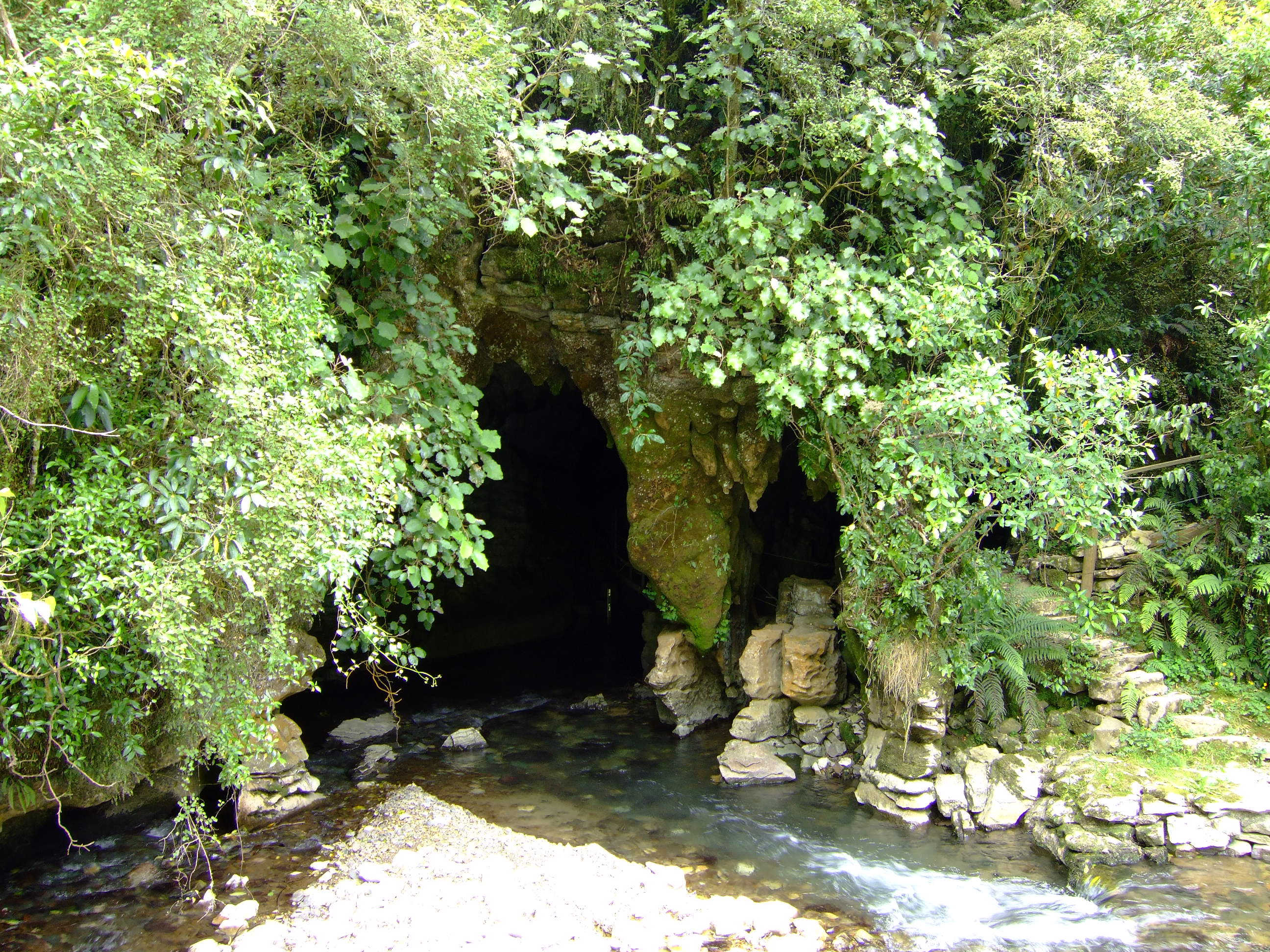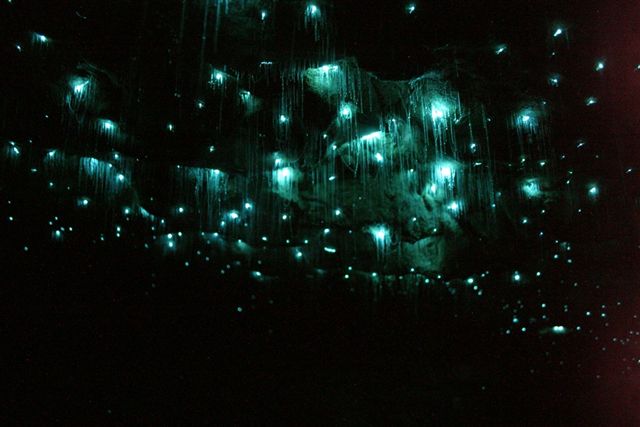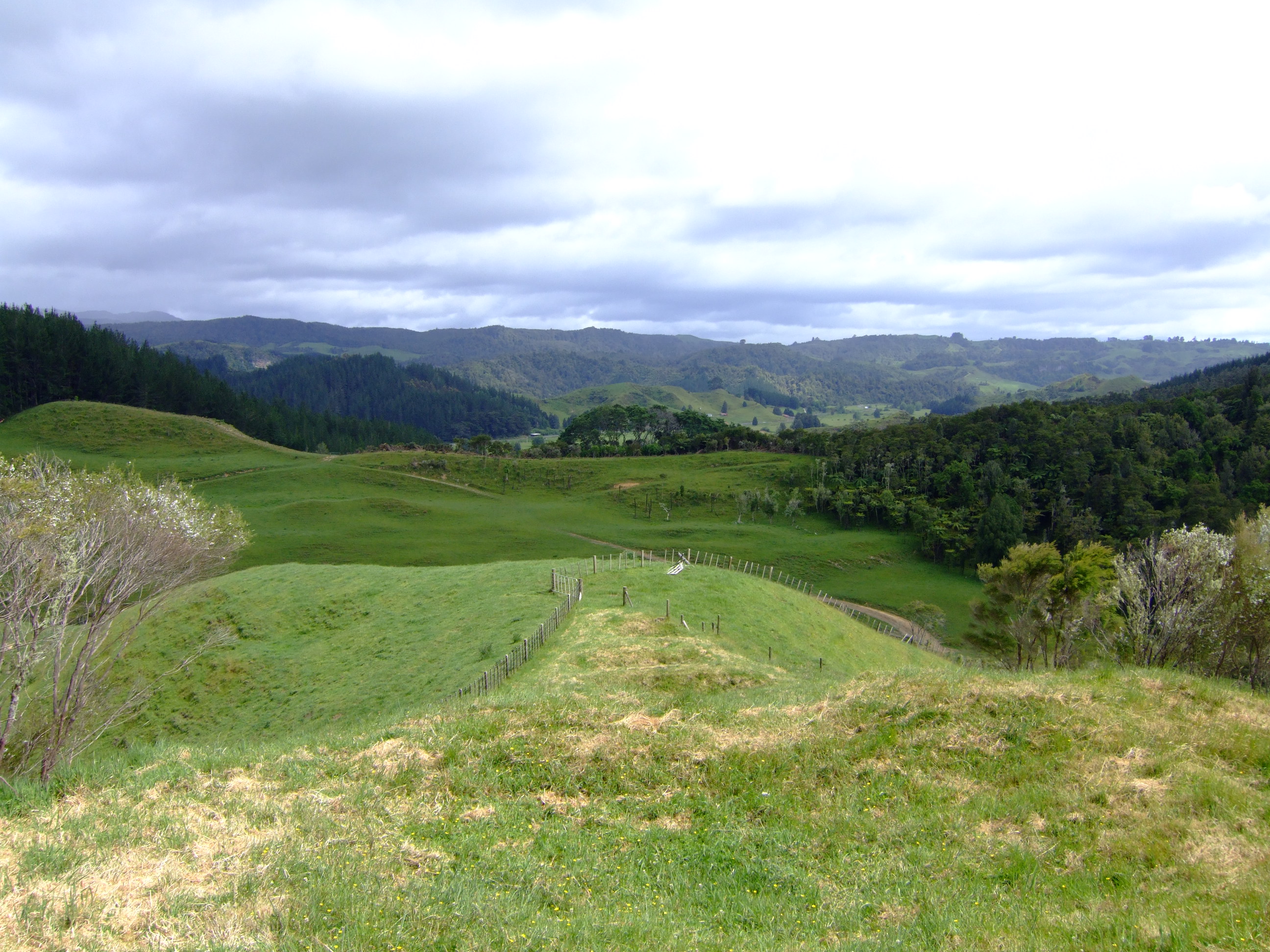|
Andafanyanor Hísime - Ringare 2007 Page 2 |
|||||
|
Waitomo Waitomo is a Maori name meaning "the stream that flows into the hole in the ground". Wai means "water" and tomo "hole, entrance". The great number of caves have made of this small place a paradise for the adventure hungry. Not one of the adrenaline packed activities made me stop here, but the souvenir of the glowworm caves in Te Anau. According to the kind owner of the B&B who offered to make the reservation, I had the choice between the "most interesting" or "the most beautiful" caves. Beauty was the winner! The caves visited were located about 11 km out of Waitomo on the land of a sheep and cattle farm. A short hike down into a gorge and then along a small river led to the entrance of the cave. A few minutes' walk into the cave and a boat was boarded. As soon as the lights of all the helmets were switched off, I was spellbound, gliding silently under the starstudded vault of the cave.The more the eyes got accustomed to the dark, the denser became the little twinkles. On the way back, a girl suddenly bent over the boat and plunged carefully her hand into the water: Nille nenello - Silver glint out of the
water - The next morning, the little
time left before catching the bus in Otorohanga allowed me to walk up to
the Opapaka Pa outside Waitomo. A Pa is a fortified site on a hill top
and this one was build and used by the Ngati Hia in the late 18th
century. They normally lived in the valley to the south, but would
withdraw to the safety of the Pa in times of trouble. From the terrassed
slopes, one has a farreaching view into the country. Nísima vista The fragranced air
|
|
Waitomo
Waitomo est un nom maori qui signifie "la rivière qui coule dans le trou dans la terre". Wai veut dire "eau" et tomo "trou, entrée". La multitude de grottes ont fait de cette région un paradis pour les gens en quête d'une poussée d'adrénaline. C'est le souvenir des grottes de Te Anau qui m'a incitée à faire une halte ici. Selon l'aimable propriétaire du B&B, j'avais le choix entre la grotte la plus intéressante ou la plus belle. C'est la beauté qui l'a emporté. Les grottes visitées se trouvaient à 11 km en dehors de Waitomo sur les terres d'une ferme. La descente dans une gorge, puis une courte marche le long d'une petite rivière menait à l'entrée de la grotte. Après quelques minutes à pied à l'intérieur, on montait dans un bateau. Dès que les lumières de tous les casques furent éteintes, c'était magique: trente minutes de voyage silencieux sous une voûte étoilée. Au fur et à mesure que les yeux s'habituaient à l'obscurité, les lumières se faisaient plus brillantes. Sur le chemin du retour, soudain une jeune femme se penchait par dessus bord et plongeait délicatement une main dans l'eau: Nille nenello - Une brillance argentée dans
l'eau - Le lendemain, avant de prendre le bus à Otorohanga, j'avais juste le temps pour marcher jusqu'au Opapaka Pa qui se trouve un peu en dehors de Waitomo. Un Pa est un site fortifié sur une colline et celui-ci avait été construit et utilisé par les Ngati Hia à la fin du 18ème siècle. Normalement, ils habitaient dans une vallée vers le Sud, mais se réfugiaient au Pa dans des temps de troubles. De la pente en terrasses, la vue s'étend loin dans la campagne. Sur le chemin du retour à Waitomo, ma marche rapide fut soudainement ralentie par une odeur familière: Nísima vista L'air
parfumé |
|||
Vocabulary: The New Zealand glowworm is a native to this country and differs from glowworms elsewhere in the world. Its latin name is Arachnocampa Luminosa. Arachno stands for its spider-like ability to spin silk to catch insects. Campa means larva. These glowworms are in fact insects. They exist only in "wet" caves (with rivers) as they need a humidity of the air near saturation point, otherwise they dry out and die. Le ver luisant
néo-zélandais est une espèce indigène qui diffère des vers luisants
ailleurs dans le monde. Son nom latin est Arachnocampa Luminosa. Arachno
pour sa capacité de tisser des fils de soie pour attraper des insectes
et campa veut dire larve. Ces vers luisants sont en fait des insectes.
Ils n'existent que dans les grottes humides où il y a des rivières,
car ils ont besoin d'un taux d'humidité dans l'air proche du point
de saturation, autrement ils sèchent et meurent. * N.B. The pictures on this
Internet site are the property of the webmaster except the two pictures
marked with an asterisk that have been provided by Spellbound Cave Tours
in Waitomo. |
|||||




